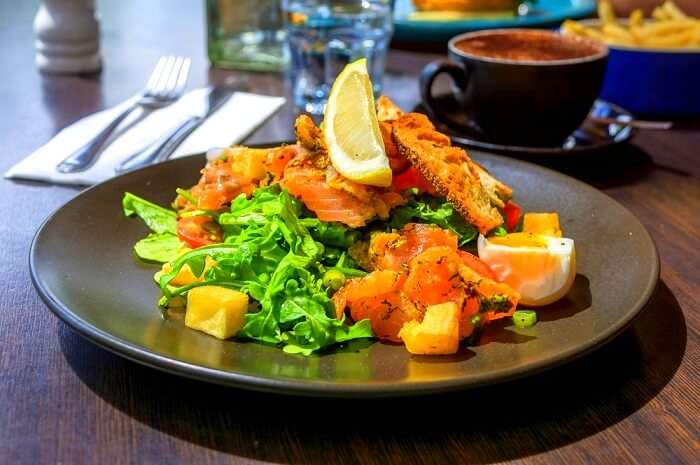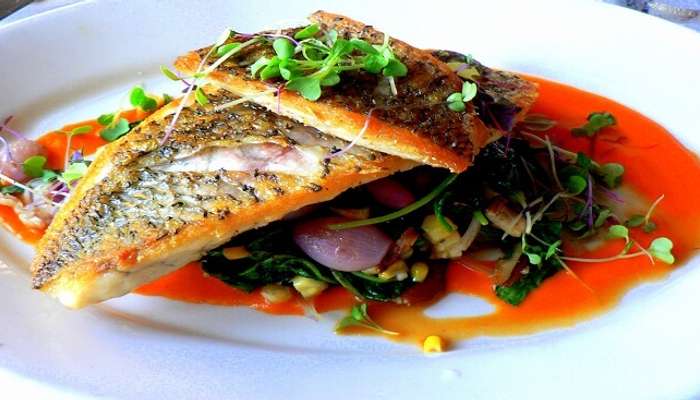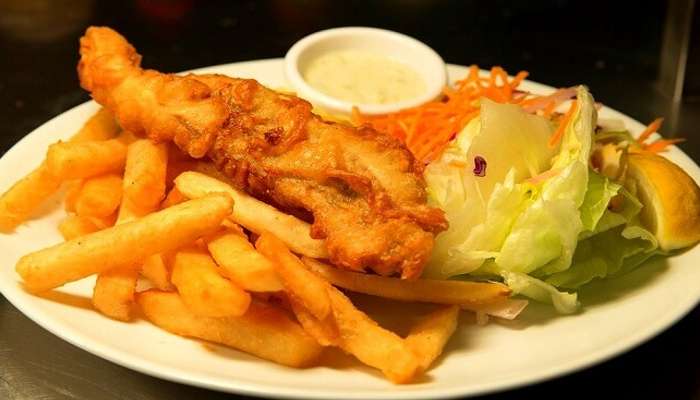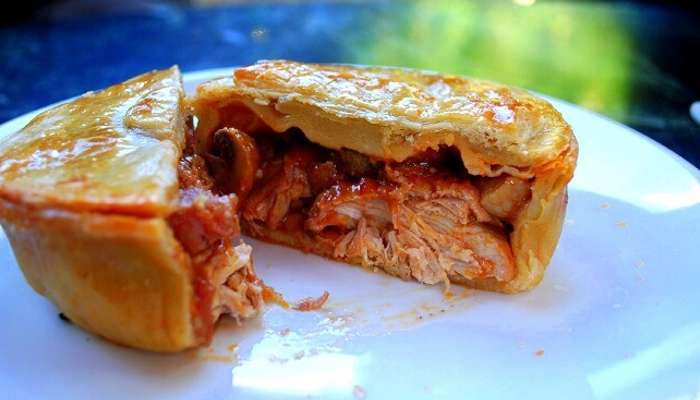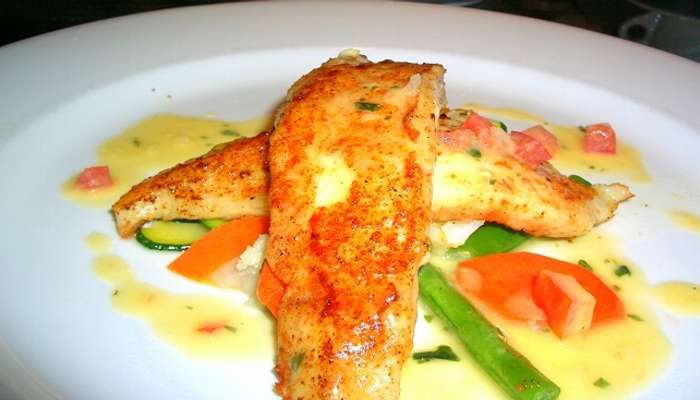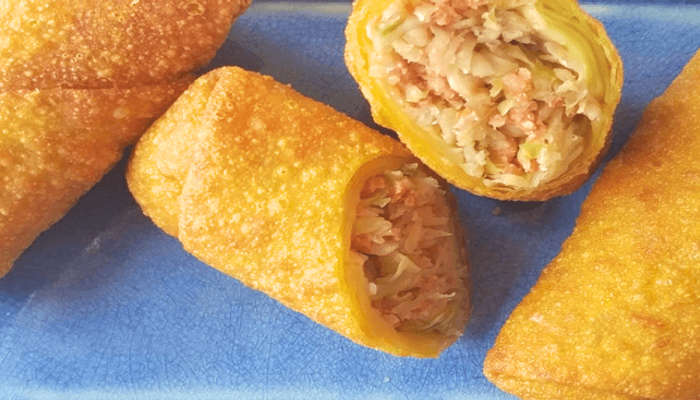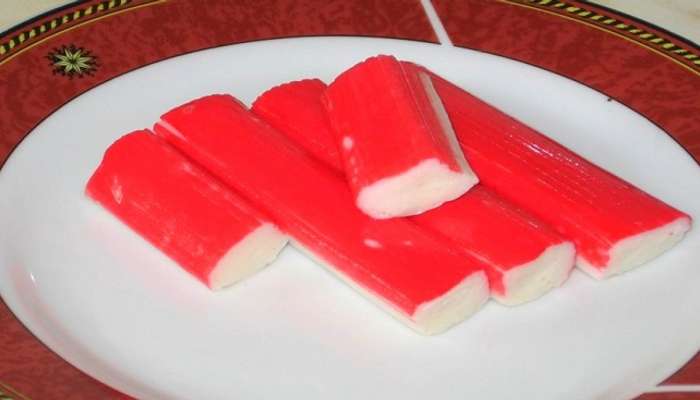After Day One at the wineries and Days Two and Three at the grill, we spent our last day on a barely too brief to mention swing into San Francisco where we wandered the Ferry Market Building and lunched at the Slanted Door with friends before heading up to Berkeley. We had dinner with a
gorgeous group of food bloggers that evening at Oliveto in Oakland, and on recommendation from the lovely Shuna, breakfast at Mama’s Royal the next morning. In between these gullet-gutting excursions, we found some time on Monday to wander about the Berkeley campus where we wallowed in nostalgia for our unscheduled college days and once wrinkle-free foreheads (fine, that was just me) before jetting back to the land of late dinners, humidity, and the daily grind.
But really–let’s cut to the chase already, shall we? After raking through my extensive notes from the weekend’s grilling class, it’s even clearer than before what a Grilling 101 it was, chock full of building blocks. The recipes, though, were anything but introductory and I’ve included one of my favorites at the end.
So, with little further ado, five totally nerdy bits of grilling information I learned this weekend:
1. Do you know why gas grills don’t sear as well as charcoal grills? To get a good sear, you need a raging hot fire and a dry surface. Charcoal burns drier than gas. Gas is about 30 percent moisture, releasing 1/2 to 1 cup water every 10 minutes that the grill is on. This water adds steam to the cooking process.
2. There are five ways only to cook with fire: Right in the fire, right near the fire (like toasting a marshmallow), directly over the fire, indirectly, with no heat directly underneath, and an oven set-up, where the walls are heated. [See Figure 1, brought to you by a one-hour delayed flight.] Indirect was totally new to me because I’m obviously not from the South or Southeast, two regions where they would never call throwing burgers and hot dogs on directly over a blazing grill “barbecue.”
3. But there are six grilling techniques: direct, which is what we are the most used to, and is a lot like broiling; indirect, which is great for denser, bigger foods that take a long time to cook; rotisserie, which is great for even-browning and add smoke, which is a great technique for gas grills, which impart no aroma; barbecuing, usually with a pit smoker and an off-set firebox, whereby food cooks for a long time over a very low, highly-flavored heat; and cooking in the coals, in which you ditch the grill grate and do just what it sounds like.
4. When considering grill fuels, it’s good to know the pros and cons of each. Propane grills are the most popular in the U.S., but they have the aforementioned water content issues. Gas grills are also common, connected directly to the gas line of the house. (My parents, EMTs and my father the volunteer fireman would probably like to add that directly connected gas lines can be serious fire hazards.) Charcoal comes in two forms, briquettes and lump charcoal. Of the former, some are made with cheap scrap wood and all sorts of other fillers, not to mention borax as a binder. Lump charcoal is their preference, it has no additives and it burns much hotter. Wood produces some of the most incredible flavors, tastes that vary from wood to wood, however, fresh wood is 50% water, is harder to light and doesn’t burn easily. Seasoned wood actually burns hotter than lump charcoal.
5. Get this: Higher heat doesn’t make something cook faster. Why? Because conduction, one of the three types of heat transfers that occurs in grilling, isn’t very effective, and little can be done to speed up the process, as food isn’t much of a conductor. Raising the temperature just traps more heat, and makes the edges browner. However, convection, or circulated heat that works even better with a lid, creating an oven-like state, is more effective, as is radiation, which is heat that comes off the fire but never directly touches the food, such as the warmth that emanates from the sun. This is the part of a class that sounded the most like science lab because they started talking about the electromagnetic spectrum, thus I did what I always did then–zoned out and doodled. Look! I drew our teachers as grills!
Finally, and no, I am not just telling you this because my weekend was like, a sponsored promotion of this book, if you have any interest at all in cooking outside, you have got to buy Mastering the Grill. It is absolutely loaded (like, 400 pages stuffed) with mind-blowing amounts of building blocks and helpful tidbits, like those above, but ten thousand more.
Usually, when we read about grilling, it’s about barbecuing, or the culture around Southern and Southeastern grilling. But this is about the technique, science, and approaches to cooking with fire, which means that it is endless useful, whether you put peaches, Foccacia, brisket or corn on the grill. The book isn’t about regional sauces or techniques, but how to wield fire to your cooking advantage.
Also? In case the “Terrance and Phillip” doodles don’t give it away, the authors are pretty cute.
One year ago: Chocolate Caramel Cheesecake
Smoke-Roasted Bell Peppers Stuffed With Garden Vegetables
Mastering the Grill by Andrew Schloss and David Joachim
Yes, I know: Where’s the beef? Well, after a weekend of burgers, chicken, sausage, and ribs I’m still in the land of Meat over and even the thought of it makes me groan a little. This, however, is something I can’t wait to make again, a lighter, crunchier and healthier variety of stuffed pepper and pretty as a picture.
Makes 8 small servings
2 medium red bell peppers
3 medium mixed bell peppers (orange, yellow, green)
3/4 teaspoon kosher salt
1/2 teaspoon ground black pepper
3 tablespoons butter
1 onion, finely chopped
2 cloves garlic, minced
1 medium zucchini, cut into 1/4-inch dice
1 medium yellow squash, cut into 1/4-inch dice
2 cups fresh or frozen corn kernels (from 3 to 4 ears of corn; for extra flavor, once you’ve cut the kernels off, use the dull side of your knife blade to scrape the remaining corn and juices, or “milk” from the cob)
1 medium tomato, seeded and cut into 1/4-inch dice
2 tablespoons chopped fresh herbs (such as parsley, oregano, basil or a mix)
1/4 cup plain dried breadcrumbs
Oil for coating grill grate
2 tablespoons grated Parmesan cheese (optional)
If using a gas grill: Use indirect heat on medium (325° to 350°F), a 2- to 4-burner grill-middle burner(s) off, or a 2-burner grill with 1 side off and a clean, oiled grate.
If using a charcoal grill: Indirect heat, medium ash, split charcoal bed (about 2 dozen coals per side) with a clean, oiled grate on medium setting
1. Heat the grill as directed. Soak 2 cups of apple or oak wood chips or chunks in water for one hour.
2. Seed, core and cut one of the red bell peppers into 1/4-inch dice. Cut the remaining bell peppers in half lengthwise right through the stem, leaving a bit of stem attached to each half. Cut out the cores, seeds, and ribs from the interiors of the peppers, leaving the stem intact. Sprinkle the insides of the peppers with 1/4 teaspoon of the salt and 1/4 teaspoon of the pepper.
3. Melt the butter in a large skillet over medium heat. Add the onion and saute until almost tender, about 4 minutes. Add the garlic, chopped bell pepper, zucchini and yellow squash. Saute the vegetables until crisp-tender, about 4 minutes. Stir in the corn and tomato and cook until heated through 1 to 2 minutes. Stir in herbs, breadcrumbs, and the remaining 1/2 teaspoon salt and 1/4 teaspoon pepper. Cook and stir until the breadcrumbs soak up most of the liquid in the pan. Remove from the heat and spoon the filling equally into the pepper cavities.
4. When the grill is hot, put the soaked wood chips or chunks over the coal on both sides of the grill. If using gas, put the wood chips in a smoker box or in a perforated foil packet directly over one of the heated burners.
5. Brush the grill grate and coat it with oil. Put the stuffed peppers over the unheated part of the grill, cover, and cook until just tender 20 to 30 minutes. If your grill has a temperature gauge, it should stay around 350ºF.
6. Remove the peppers to a large serving platter. Sprinkle with the Parmesan (if using) and serve.
